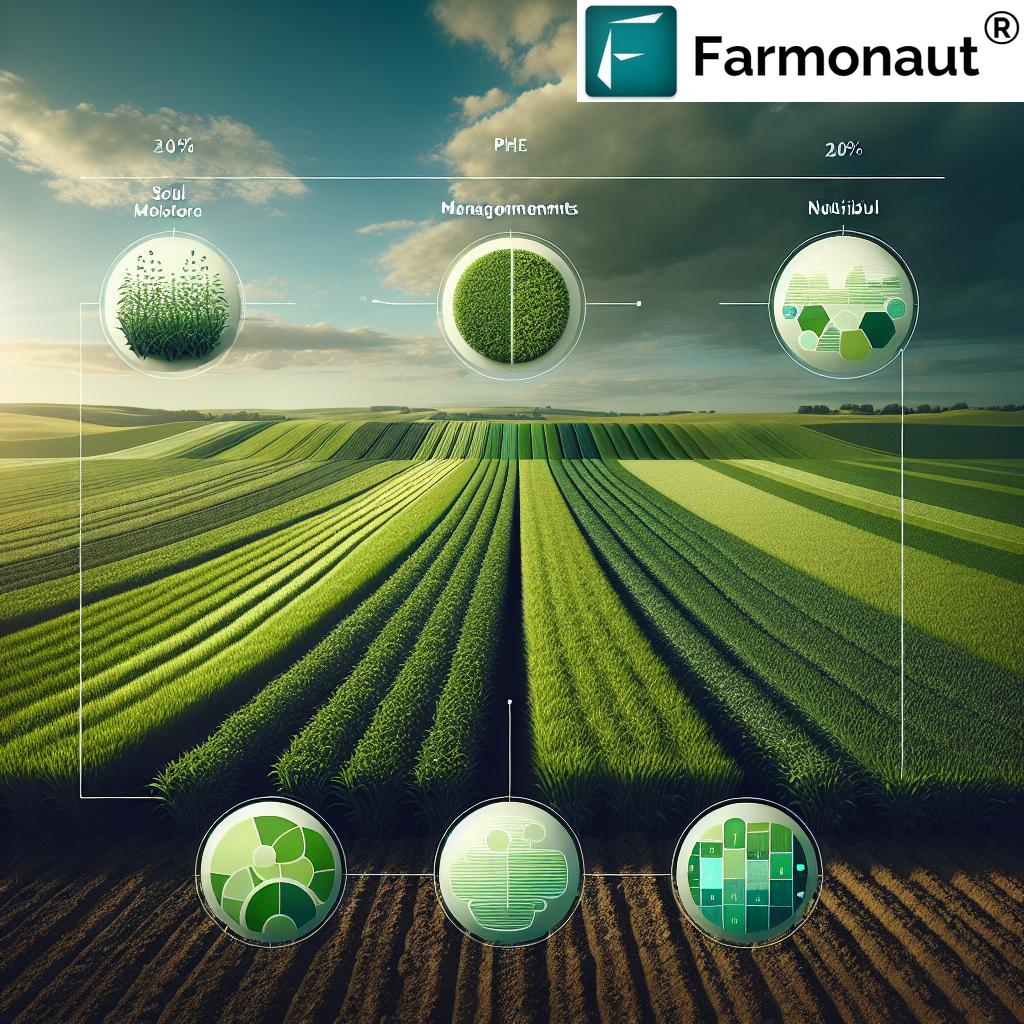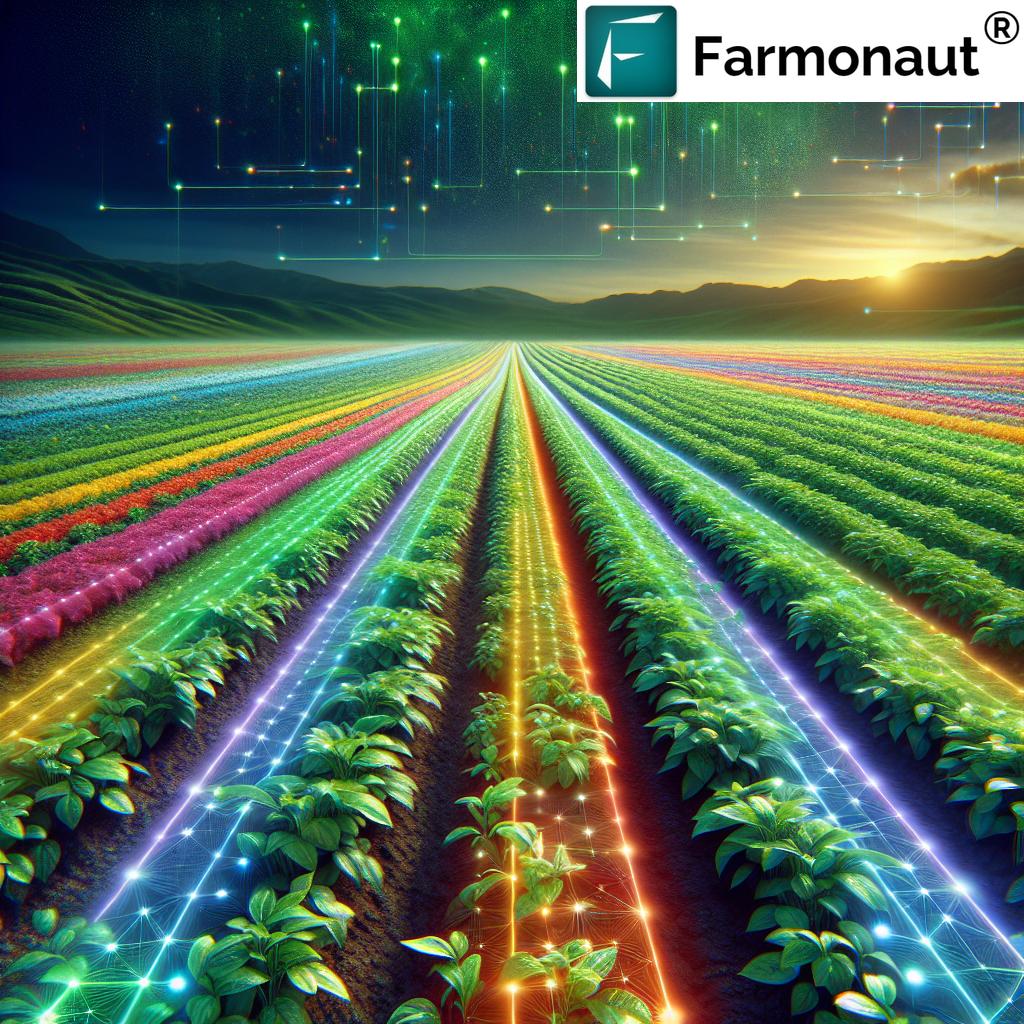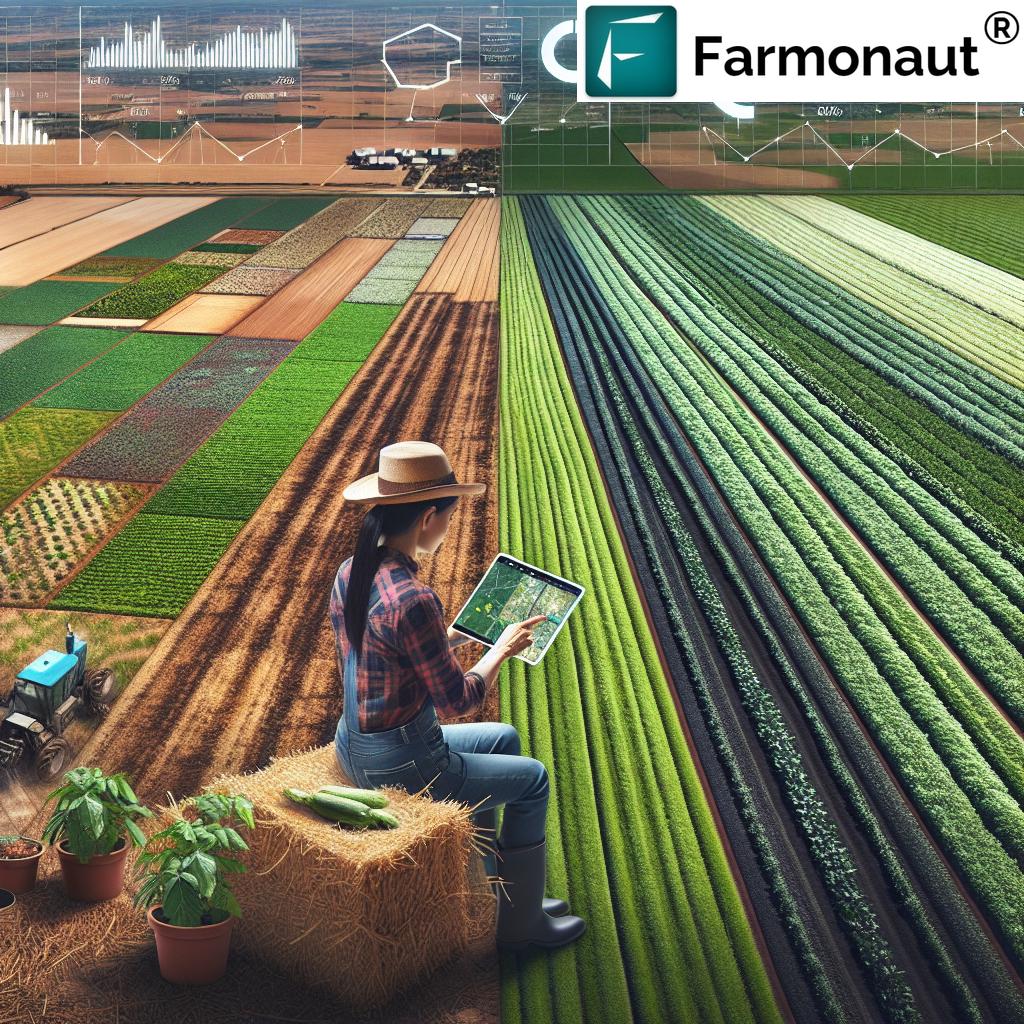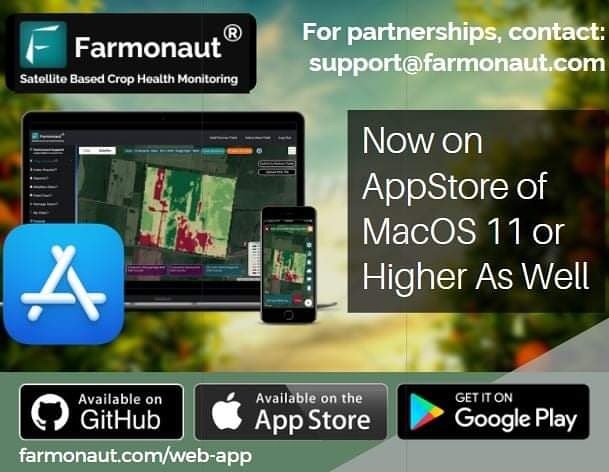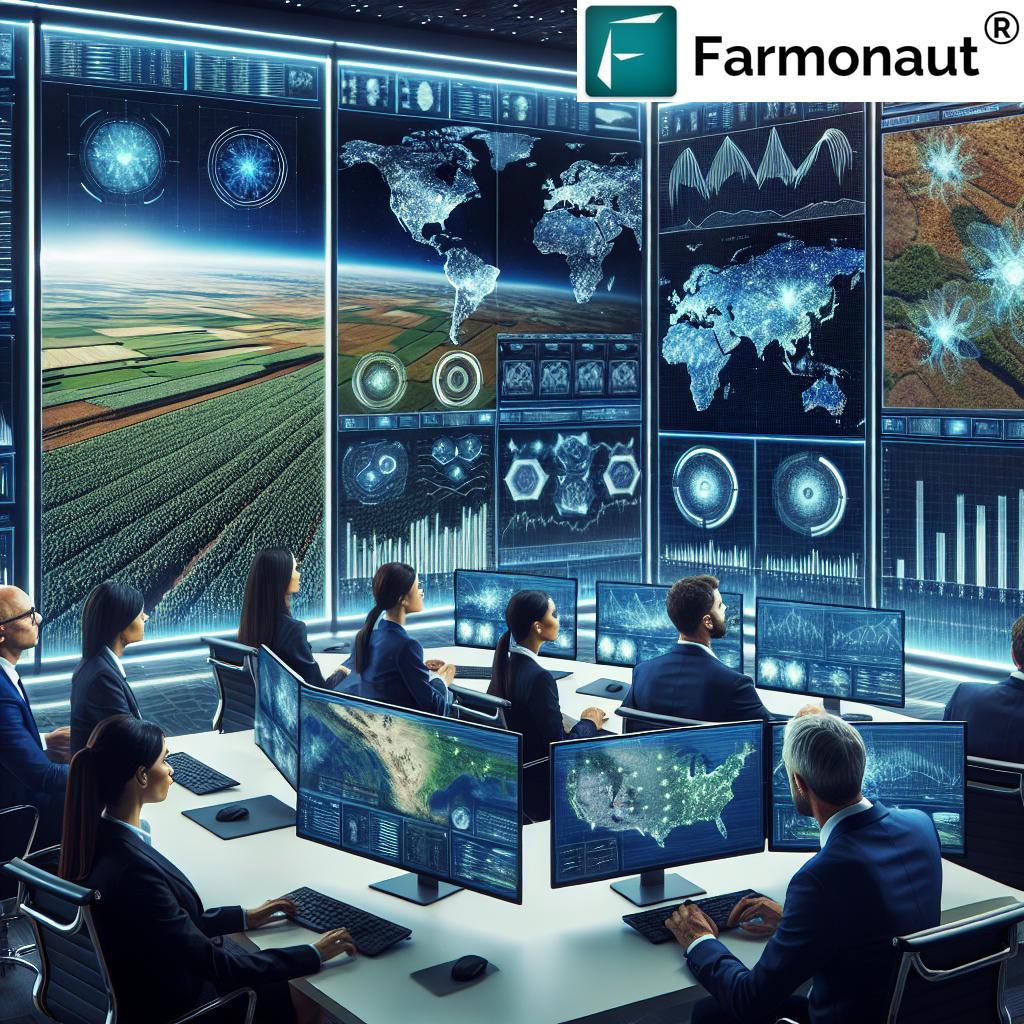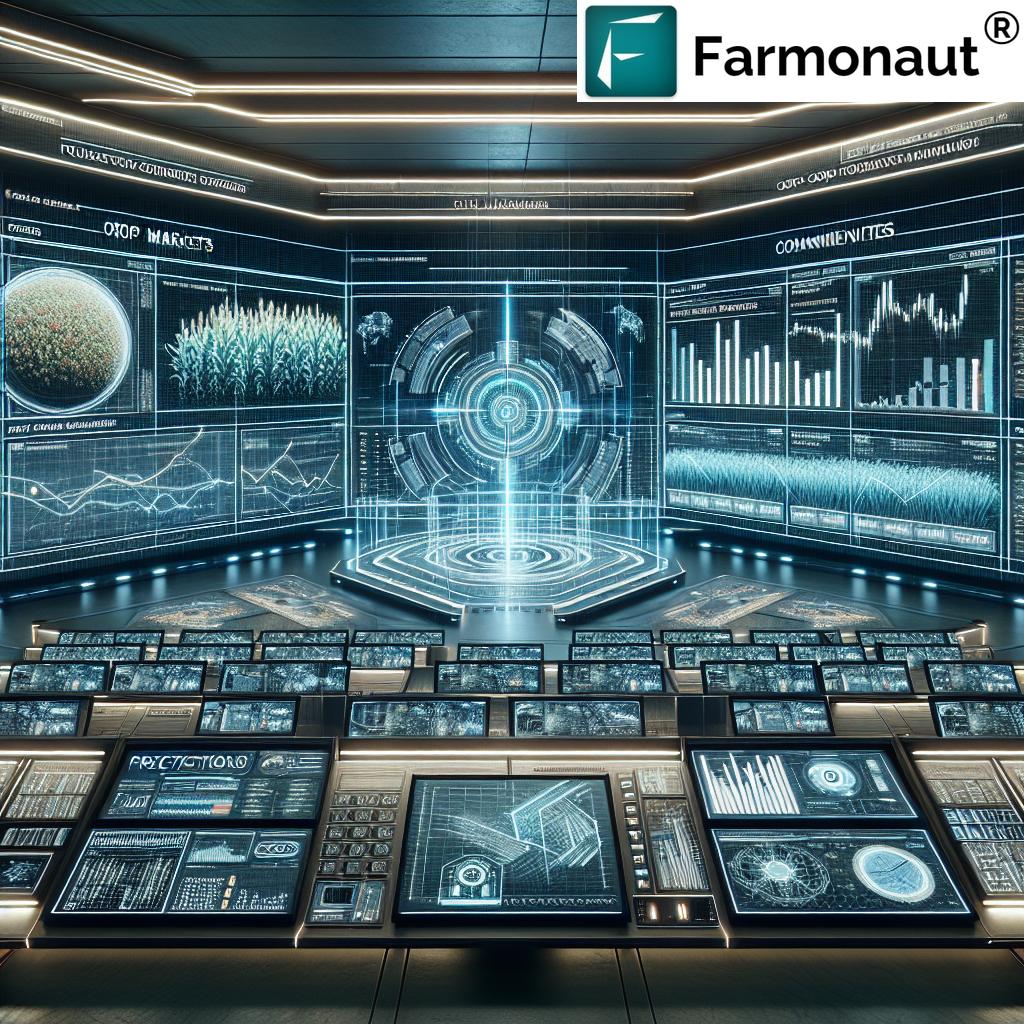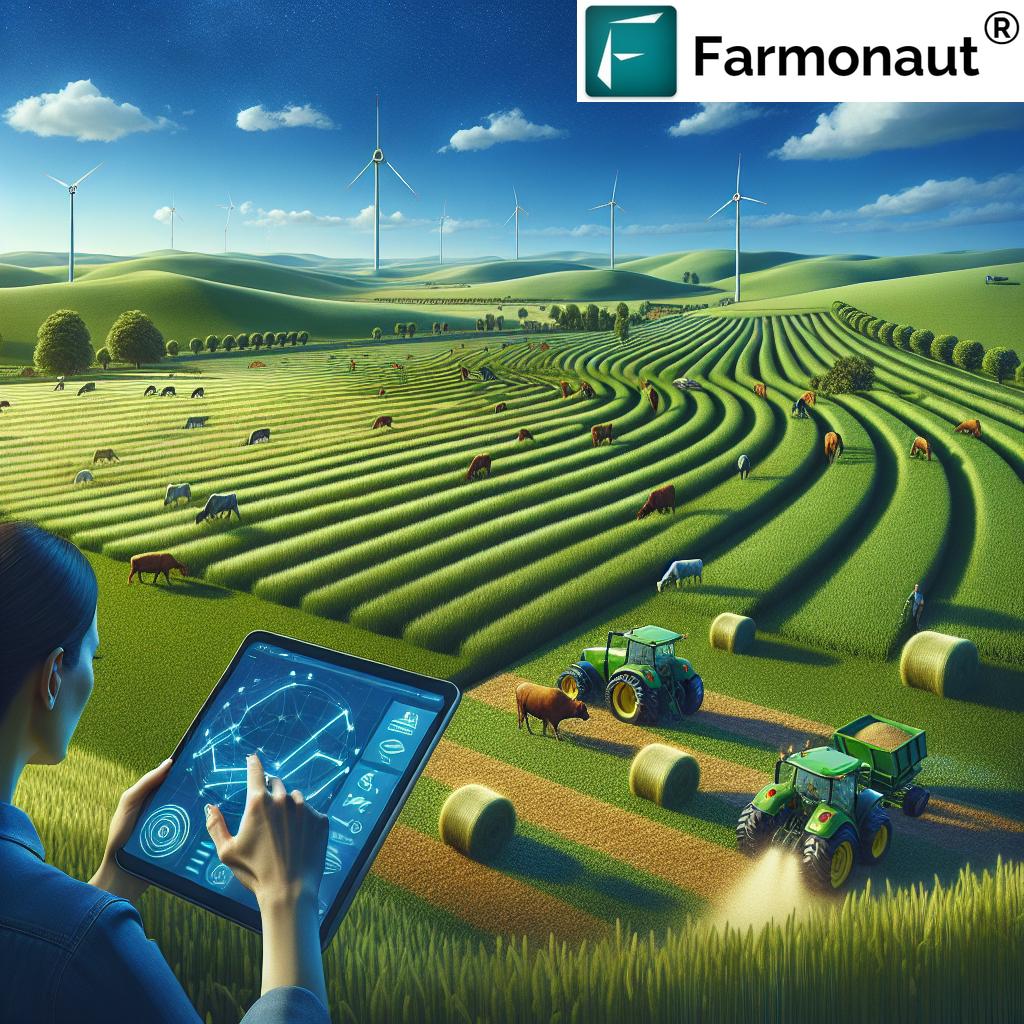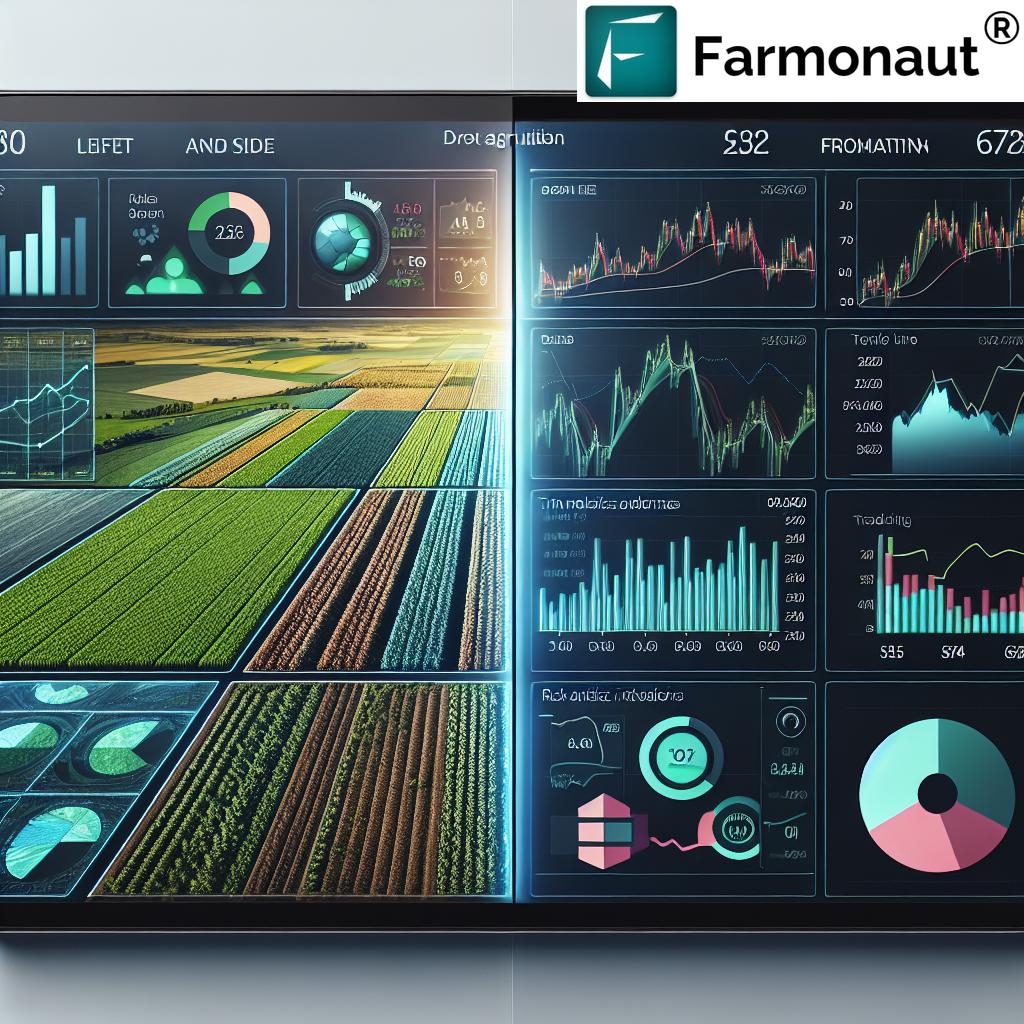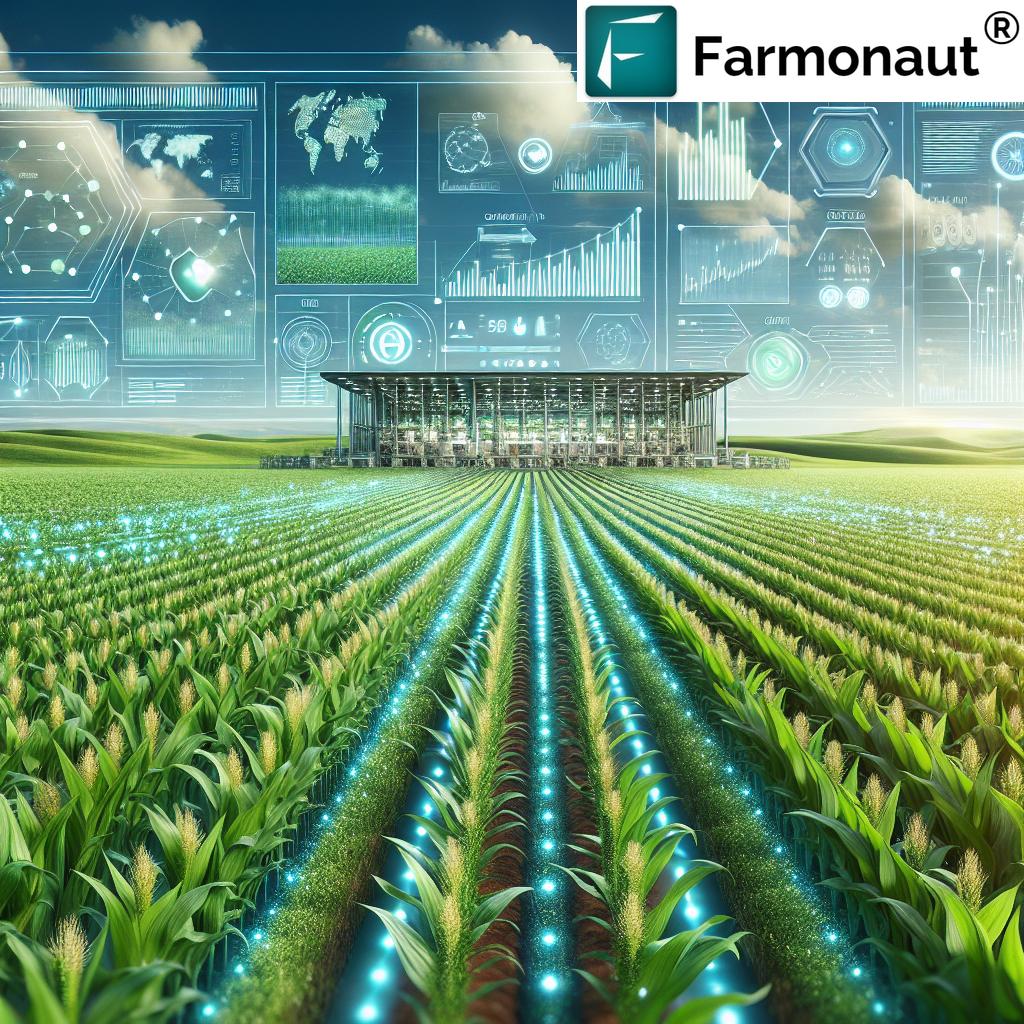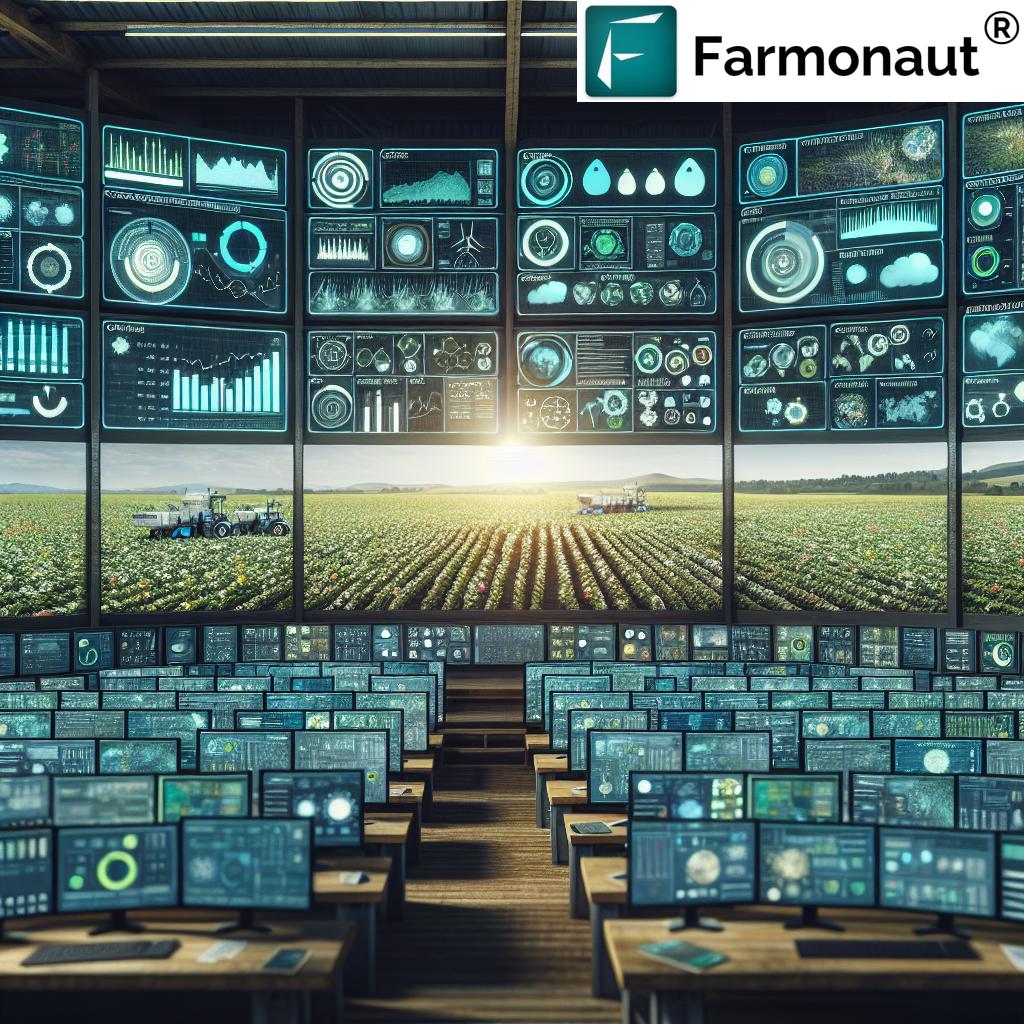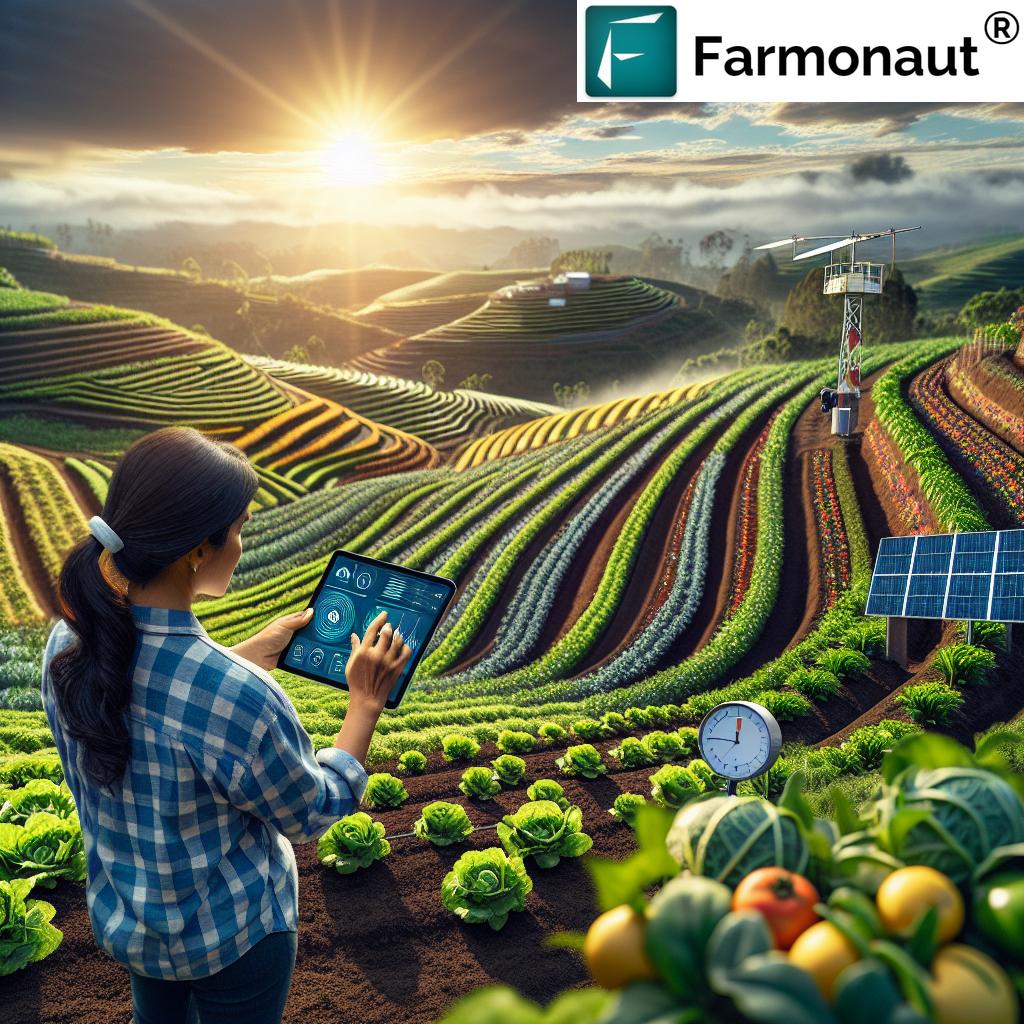Precision Grow Crop Monitoring: 7 Shocking Tech Reveals
“Precision crop monitoring can boost yields by up to 20% using real-time data analytics and advanced soil sensors.”
Table of Contents
- Introduction to Precision Agriculture & Crop Monitoring
- The Technology Foundations of Precision Agriculture
- 7 Shocking Tech Reveals in Precision Grow Crop Monitoring
- Soil Management: Mapping and Analytics
- Crop Health Monitoring: Sensors, Imaging, and AI
- Variable Rate Application (VRA): Precision Input Optimization
- Remote Sensing and Imaging: Drones & Satellites
- IoT and Wireless Sensor Networks (WSNs)
- Data Analytics and Machine Learning in Farming
- Variable Rate Technology (VRT)
- Bonus: Nanotechnology in Agriculture
- Comparative Benefits Table: Smart Farming Technologies
- Economic and Environmental Impact
- Farmonaut: Next-Gen Precision Crop Monitoring Platform
- Farmonaut Subscription Options & API Access
- Frequently Asked Questions
- Conclusion
Introduction to Precision Agriculture & Crop Monitoring
At the heart of today’s agricultural revolution is the concept of precision agriculture, a modern farming management approach that utilizes advanced technologies and information systems to ensure every crop and the soil that sustains it receives exactly what it needs. By employing tools like IoT sensors, GPS mapping, machine learning platforms, and powerful data analytics, we can now manage field variability, optimize all input applications, and achieve superior yields with markedly reduced environmental impacts.
Our modern crop monitoring systems are no longer limited to visual observations or manual sampling. With real-time monitoring of soil health, water status, plant nutrition, and disease detection, we are empowered to make data-driven interventions that maximize productivity, precision, and sustainability.
As part of the smart farming era, we find ourselves at the junction of agricultural tradition and technological innovation. In this comprehensive exploration, we’ll uncover the 7 most shocking technology reveals in precision grow crop monitoring, show how they reshape soil health management, and transform the future of farming.
The Technology Foundations of Precision Agriculture
Let’s set the scene: Precision agriculture is not just about deploying cutting-edge technology—it’s about working smarter with what our farms already possess. We leverage interconnected crop management systems—from satellite-based imaging and IoT devices to AI-powered analytics—to assess, monitor, and control every step of the crop development process.
By integrating remote sensing in farming, variable rate application (VRA), and real-time decision support tools, we ensure that each zone within a field is treated according to its unique characteristics. This tailored approach vastly improves input efficiency, resource utilization, and overall farm productivity.
- Key Features: Site-specific soil mapping, advanced crop health detection, automated input management, and continuous environmental monitoring
- Major Technologies: Satellite imagery, drones, probes and soil sensors, algorithmic data analysis, blockchain traceability, and real-time advisory systems
“Over 70% of smart farms now use AI-driven crop monitoring systems for precise soil health management.”
7 Shocking Tech Reveals in Precision Grow Crop Monitoring
Let’s break down the precision crop monitoring revolution by spotlighting 7 transformative technologies and how they remake modern agriculture.
1. Soil Management: Mapping and Analytics
Effective soil management is the bedrock of successful crop production. Through precision agriculture, we employ tools such as GPS-connected machinery, soil sensors, and remote sensing to map key properties like pH, moisture, and nutrient status across field zones.
- Soil Mapping: Geo-referenced digital maps generated via satellite imaging or probes reveal spatial variability and environmental patterns, helping us to implement site-specific practices.
- Benefits: More precise use of fertilizers and water, improved soil health, minimized environmental impacts, and ultimately, increased yields and crop quality.
- Example: By identifying areas with low soil organic content, we can apply inputs only where deficient, reducing both waste and cost.
A standout solution in this domain is Farmonaut, which provides satellite-driven, app-based soil moisture monitoring and crop advisories to farmers globally.
2. Crop Health Monitoring: Sensors, Imaging, and AI
We have reached a point where traditional field walks are enhanced or even replaced by AI-powered, sensor-driven crop health monitoring systems. Here’s how:
- IoT Sensors: Track soil moisture, plant transpiration, and growth metrics in real time.
- Multispectral Imaging & Spectral Analysis: Identify nutrient deficiencies, disease outbreaks, chlorophyll content, and thermal stress—often before symptoms are visible to the naked eye.
- Sap Flow Monitoring: Specialized sensors assess water uptake and transpiration, optimizing irrigation scheduling.
Such interventions enable us to take immediate, targeted action—be it pesticide dosing, fertilizer application, or replanting—leading to maximized yields and robust crop vigor.
Looking to enhance your plantation or need precise farm advisory? Discover the Farmonaut Crop Plantation & Forest Advisory Platform—your one-stop solution for real-time crop status monitoring and tailored guidance for smarter farming.
3. Variable Rate Application (VRA): Precision Input Optimization
Why treat the whole field the same? Variable Rate Application (VRA) is a standout technique that optimizes input use based on accurate field conditions:
- Prescription Mapping: GPS-linked field data is used to create zone-specific input application rates (seeds, fertilizers, pesticides).
- Targeted Efficiency: High-need zones get more input; healthy zones get less—slashing waste and costs while boosting crop uniformity.
- Environmental Stewardship: Reduces runoff and chemical build-up in soil and water bodies.
VRA’s granular control is making sustainable farming technologies practical and scalable—even for smallholder farmers using services accessible from their smartphones, like the Farmonaut App.
Managing extensive operations? The Farmonaut Large Scale Farm Management module enhances plantation efficiency, compliance, and real-time operational control for agribusiness and government farm programs.
4. Remote Sensing and Imaging: Drones & Satellites
Remote sensing in farming has revolutionized our ability to monitor fields at scale. Via multispectral cameras, satellite platforms, and drone imaging, we can:
- Assess Crop Health: Identify stress, disease, water deficiency, or pest presence—fast and with minimal labor.
- Increase Monitoring Frequency: Satellite feeds provide updated images as often as every few days, even for massive agricultural regions.
- Enable Immediate Action: Analytical models can trigger alerts when issues are detected, driving early intervention.
By integrating Farmonaut Fleet & Resource Management features, agribusinesses can coordinate and track drone or field team operations for timely, site-specific interventions.
5. IoT and Wireless Sensor Networks (WSNs)
The Internet of Things (IoT) in agriculture enables us to collect, transmit, and analyze data from a multitude of sensors—streamlining farm operations and decision-making.
- Applications: Monitor soil moisture, temperature, growth rates, and environmental hazards, all in real time.
- Automation: Integrate with automated irrigation systems, pest traps, and even security devices.
- Remote Control: Control farm equipment, activate pumps/sprinklers, or adjust variable rate applications from the cloud or mobile apps.
These networks are not just for large-scale operations; smallholders can benefit too, using accessible technology on platforms like Farmonaut that integrate IoT-driven data flows and in-app guidance.
Explore how Farmonaut’s Carbon Footprinting tool helps agribusinesses and farmers track and reduce emissions, making farming environmentally responsible and regulation-compliant.
6. Data Analytics and Machine Learning in Farming
We’re now harnessing the power of data analytics for crop management and machine learning in farming to:
- Predict Crop Performance: Machine learning models analyze input/output, weather, and historical field data to forecast yields and pinpoint at-risk zones.
- Optimize Decision-Making: Advanced algorithms recommend optimal planting/harvest times, irrigation schedules, and input rates tailored to current and projected field conditions.
- Self-Learning Systems: The more data we feed them, the smarter these systems become—enabling farms to continually improve productivity and efficiency.
Platforms like Farmonaut employ AI-driven advisory engines and predictive analytics accessible directly via mobile or desktop dash, perfect for both smallholder and enterprise-scale operations.
Need risk management for your fields? Leverage Farmonaut Crop Loan and Insurance verification—using satellite-backed monitoring for fraud-proof, rapid approvals.
7. Variable Rate Technology (VRT)
Variable Rate Technology (VRT) is the embodiment of precision control in farm input applications:
- Precision Dosing: Seeds, fertilizers, pesticides, and water are distributed at exactly the right rates for each micro-zone—often controlled by prescription maps and GPS-guided machinery.
- Sustainability: This reduces environmental impacts while maximizing plant health and production quality.
- Cost Savings: VRT dramatically lowers unnecessary input expenses by detecting and targeting only those zones and plants that actually need intervention.
VRT is now accessible to mainstream farmers, especially with Farmonaut’s variable rate advisory support, ensuring even the smallest plots receive precision treatment.
Bonus: Nanotechnology in Agriculture
Nanotechnology in agriculture is ushering in a new era of ultra-precise crop monitoring and soil health management:
- Nanosensors: Ultra-small sensors embedded in soil or applied via foliar sprays detect real-time changes in nutrient levels, contaminants, and even early signs of disease-causing pathogens.
- Graphene-Based Devices: Next-gen sensors measure nitrate/phosphate concentrations, fueling precise fertilizer management strategies.
- Water Optimization: Microscopic moisture sensors inform data-driven irrigation practices, saving water and reducing costs.
This emerging technology will soon be central to both large and small-scale farm management systems, paving the way for hyper-efficient, sustainable farming technologies.
“Over 70% of smart farms now use AI-driven crop monitoring systems for precise soil health management.”
Comparative Benefits Table: Smart Farming Technologies
To help you quickly assess the value of each groundbreaking precision agriculture innovation, consider this comparison of functionality and quantifiable impacts:
| Technology Name | Main Functionality | Estimated Yield Improvement (%) | Estimated Cost Savings (%) | Soil Health Impact |
|---|---|---|---|---|
| Soil Management & Mapping | Mapping soil variability & tailoring nutrient/water application | 10–20% | 10–15% | High—Promotes balanced fertility and structure |
| Crop Health Monitoring (Sensors & AI Imaging) | Real-time detection of disease, stress, vigor via IoT & imaging | 15–25% | 10–20% | Moderate—Reduces overuse of agrochemicals |
| Variable Rate Application (VRA) | Zone-specific input application based on field conditions | 10–18% | 15–30% | High—Minimizes nutrient leaching & runoff |
| Remote Sensing (Drones, Satellites) | Large-scale, high-frequency imagery for agronomic decisions | 10–15% | 5–10% | Moderate—Better timing of management actions |
| IoT & Wireless Sensor Networks (WSN) | Automated real-time monitoring and remote control | 12–20% | 10–18% | High—Enhances water and nutrient management |
| Data Analytics & Machine Learning | Predictive modeling for crop outcomes & risk minimization | 12–22% | 8–15% | Moderate—Supports optimal field interventions |
| Variable Rate Technology (VRT) | Automated, ultra-precise application of inputs via smart machines | 10–18% | 18–32% | Very High—Protects soil biology and fertility |
| Nanotechnology & Nanosensors | High-sensitivity monitoring of nutrients, pathogens, and moisture at micro-scale | 15–25% | 12–20% | High—Rapid detection for improved management |
Access precision crop monitoring anywhere, anytime—on your favorite device!
Developer or business looking to integrate satellite and weather data for smarter agriculture?
Get started with the Farmonaut API and access satellite-based field, soil, and crop monitoring systems programmatically. Comprehensive documentation is available at our API Developer Docs.
Economic and Environmental Impact of Precision Crop Monitoring Systems
By embracing precision agriculture and its crop monitoring systems, we open pathways to not just higher productivity but also genuine sustainability and economic resilience.
Key Economic Benefits:
- Optimizing Inputs: Input savings (fertilizers, water, pesticides) average 10–30%, freeing resources for strategic investments.
- Revenue Boost: Higher yields, increased quality, and improved marketability of produce.
- Risk Mitigation: Early detection of issues and predictive analytics reduce catastrophic losses due to weather or pest outbreaks.
- Enhanced Financing Access: Satellite-based monitoring through platforms like Farmonaut streamlines crop loan and insurance processes, lowering fraud and improving approval times.
Environmental Benefits:
- Reduced Chemical Footprint: VRA, VRT, and targeted management mean fewer chemicals leach into local ecosystems.
- Soil Preservation: Site-specific mapping and monitoring systems protect soil structure and organic matter.
- Water Conservation: Real-time soil and plant moisture data prevents unnecessary irrigation, saving vital resources.
- Carbon Accounting: Digital tools like Farmonaut’s Carbon Footprinting module help farms and businesses monitor, reduce, and report greenhouse gas emissions for a greener future.
Farmonaut: Next-Gen Precision Crop Monitoring Platform
As a leading agricultural technology company, Farmonaut is democratizing precision agriculture for farmers worldwide. Unlike traditional systems, Farmonaut relies on advanced satellite imagery, AI-driven analytics, and low-cost app-based solutions—making smart farming accessible and affordable for everyone.
- Satellite-Based Crop Health Monitoring: Access key indices like NDVI, soil moisture, and vegetation vigor for real-time interventions.
- AI-Driven Jeevn Advisory System: Receive customized crop advice, weather forecasts, and real-time actionable alerts via your mobile or desktop.
- Blockchain-Based Traceability: Guarantee supply chain transparency and product trust—visit Farmonaut Product Traceability to learn more.
- Resource & Fleet Management: Easy in-app management of vehicles, field staff, and resource usage for both small farms and large agribusiness.
- Environmental Compliance: Use the Carbon Footprinting module for regulatory reporting and sustainability tracking.
- Affordable, Subscription-Based: Pay only for the hectares you monitor—access everything on web, Android, or iOS apps.
- API Integration: The Farmonaut API enables seamless integration for developers and agritech firms seeking to power their apps with advanced crop and weather data.
With its highly modular platform—serving everyone from individual farmers and cooperatives to governments and large corporates—Farmonaut is at the forefront of transforming modern farming with precision, transparency, and sustainability.
Farmonaut Subscription Options & API Access
Ready to experience next-generation crop monitoring? Choose a Farmonaut plan tailored for your needs. Whether you are a smallholder, a large plantation manager, an agritech developer, or a government stakeholder, our modular subscription system provides scalable access to all premium features.
Want to scale up or connect your business apps directly? Review our API developer documentation for details on automated crop monitoring, custom soil and weather data feeds, and seamless field management integration.
Frequently Asked Questions (FAQ)
What is precision agriculture and how does it differ from traditional farming?
Precision agriculture is a data-driven management concept that leverages GPS, sensors, satellite imagery, and analytics tools to assess crop and soil variability. Unlike traditional farming, which applies uniform treatments, precision agriculture targets specific field zones or even plants, optimizing input use and maximizing yield while minimizing environmental impact.
How do crop monitoring systems help increase yield?
Crop monitoring systems use real-time data from sensors, imaging devices, and satellite feeds to continuously track plant health, soil conditions, nutrient needs, and pest outbreaks. Early detection and targeted intervention prevent diseases, reduce resource wastage, and boost overall crop productivity—often increasing yields by 10–25%.
Can smallholder farmers access advanced precision agriculture technologies?
Yes! Platforms like Farmonaut make advanced technologies accessible via affordable web, Android, and iOS apps. There’s no need for expensive hardware—satellite and AI-driven advisories are delivered straight to smartphones, suitable for both small and large farms.
Are these technologies environmentally friendly?
Absolutely. By optimizing input application, reducing chemical overuse, and targeting issues early, precision technologies promote conservation of soil, water, and biodiversity—driving sustainable farming and supporting compliance with environmental standards.
What are the main benefits of using Farmonaut’s platform?
Farmonaut provides real-time crop monitoring, AI-based crop health advisories, blockchain-enabled traceability, resource & fleet management, and climate compliance tools. All are delivered through a cost-effective subscription model with global coverage, making leading-edge precision agriculture solutions available for all types of farms and organizations.
How accurate are remote sensing and satellite imaging systems?
Modern remote sensing solutions use high-resolution, multispectral satellites and drones capable of detecting subtle changes in vegetation health, soil moisture, and pest incidence. This data is often more accurate and objective than manual field scouting, especially over large acreage or difficult terrain.
Conclusion
Precision agriculture and advanced crop monitoring systems have forged a new path for modern farming—fusing age-old agronomic wisdom with next-generation technology. Armed with real-time soil health management, AI/ML-driven analytics, and friendly mobile platforms, today’s farmers, agribusinesses, and governments can maximize yield, reduce input costs, and promote planet-friendly practices.
Companies like Farmonaut are at the forefront of this transformation, making precision farming both scalable and affordable for all. The future of sustainable agriculture will be built on these technologies—continuous monitoring, precise interventions, and powerful data—ensuring food security and ecological stewardship for generations to come.
Ready to join the revolution? Choose Farmonaut for smarter, more sustainable, and profitable crop management—wherever you are.



